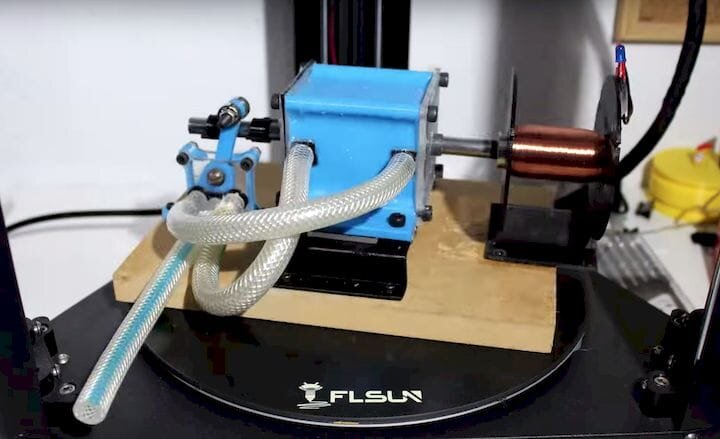![The Tesla Earthquake Machine [Source: Integza]](https://fabbaloo.com/wp-content/uploads/2020/05/image-asset_img_5eb08e70d6552.jpg)
This week’s selection is the Tesla Earthquake Machine by Integza.
Integza is a YouTube channel dedicated to making interesting things, often with 3D printed parts. One of them is the very curious Tesla Earthquake Machine.
Tesla in this case refers not to the 21st century automobile manufacturer, but rather to the “original” Tesla: Nikola himself.
Tesla (the person) was a notable inventor of the early 20th century, responsible for all kinds of fascinating devices and principles. To a large extent, he was responsible for inventing the concept of alternating current used for long distance transport of energy. This forms the basis of the familiar electrical grid upon which we all depend.
One of his inventions was the so-called “Earthquake Machine”, which was in fact an electro-mechanical oscillator. An oscillator that could be scaled to enormous sizes.
![Tesla oscillator design [Source: YouTube]](https://fabbaloo.com/wp-content/uploads/2020/05/image-asset_img_5eb08e71292de.jpg)
Basically the machine accepts input of a pressurized gas and uses a system of valves to increasingly oscillate a weighted object back and forth. Tesla’s own versions used steam from boilers, but the principle of the device can be used with any source of gas pressure.
The device was termed an “earthquake machine” due to certain unwise experiments performed by Tesla. It turns out that the oscillations could be mechanically transferred to an object in contact with the oscillator. One of Tesla’s experiments caused everything in the room to begin sliding and Tesla had to shut down the oscillator by taking a sledgehammer to the steam source.
In another incident the machine was attached to a steel building, which absorbed the oscillations and found the resonant frequency of the structure, causing dangerous vibrations that could have taken down the building. An earthquake machine, indeed!
Now it’s possible to build your own Tesla Earthquake Machine by 3D printing parts. This project was undertaken by Integza, who documents the process in this entertaining video:
Integza required several iterations of design to get the machine to work. The main problems encountered were that the limitations of filament-based 3D printing did not always result in air-tight parts. This was overcome with copious sanding.
Another issue was that the main oscillating element had to be quite heavy to maintain momentum during movement. This meant that a normally 3D printed part could not be used.
Integza fortunately decided to use the oscillator not for knocking down buildings, but instead to generate electricity by repeatedly drawing a magnet through a coil of conductive wire. This proved successful, as they were able to generate around 7V of power sufficient to light up some LEDs.
Integza has uploaded the files required to make the Tesla Earthquake Machine to Thingiverse for all to use at no charge.
Just don’t knock down any buildings.
Via YouTube and Thingiverse

